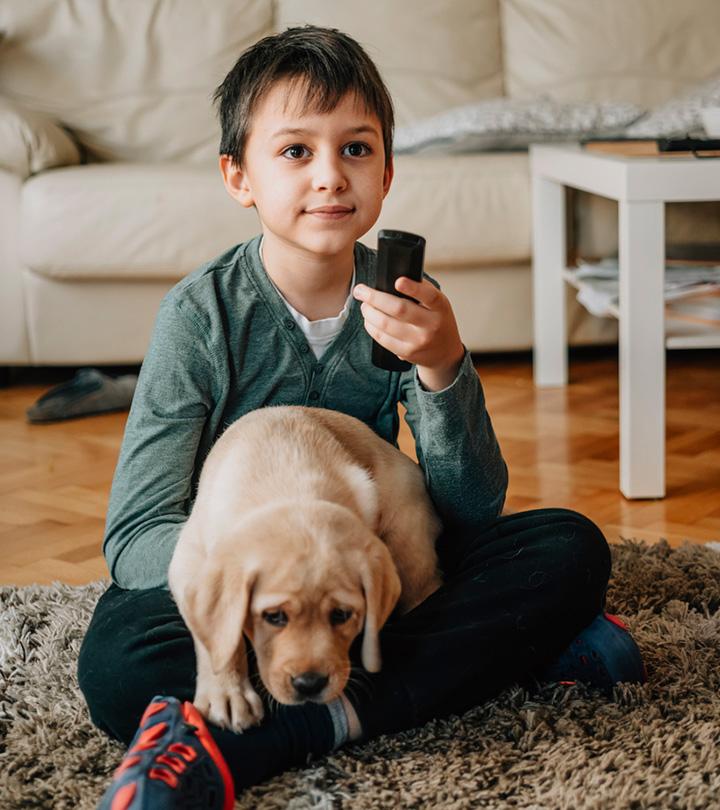
Image: MomJunction Design Team
From massive pyramids and minarets to tombs and statues, children can never get bored of learning more about the landmarks and wonders of the world. So, we have brought some exciting facts about the seven wonders of the world for kids to help your child gain more knowledge and education about the world and satiate their curiosity. The Seven Wonders of the World, ancient and modern, list the most iconic and incredible human-made architectural creations in the world. If your child shows a keen interest in their surroundings and enjoys learning about brilliant monuments and structures, these facts will surely keep them entertained and engaged for hours. We have covered all the important details and features of the seven wonders to answer your little one’s endless questions. So, read on to learn more.
Key Pointers
- Facts about the seven most marvelous creations of the world can fascinate and entertain kids.
- New seven wonders of the world include the Great Wall of China, Petra, Christ the Redeemer, Machu Picchu, Chichen Itza, Colosseum, and the Taj Mahal.
- The Great Pyramid of Giza, the Colossus of Rhodes, the Temple of Artemis, and the Hanging Gardens of Babylon are part of the seven wonders of ancient times.
- Nature and the underwater world have their own seven wonders, revealing their unique mysteries.
Seven Wonders Of The World – Then and Now
There are many beautiful things in the world. While it is not easy to rank all the incredible things on this planet, some have managed to create a list of the seven best. In fact, there are several lists of wonderful things/places in the world, and MomJunction brings the top four for you.
New Seven Wonders Of The World

Image: Shutterstock
Considering that six of the seven wonders of the ancient world do not exist anymore, a company called New7Wonders took upon itself to figure out the new seven wonders of the modern world. The company used the survey and voting system to choose the New Seven Wonders of the World. The list included seven different sites, monuments, and places from around the world, and not just Europe and Africa, where all the ancient wonders were.
1. Great Wall of China
The Great Wall of China is a series of fortified walls built using wood, stone, metal, and earth. The wall was built to protect the country from invasions, and also to control immigration between the nations around China. Here are some interesting facts about one of the modern engineering marvels from the Orient.
- The first part of the Great Wall was built under the rule of Emperor Qin Shi Huang of the Qin dynasty. They took around 20 years to complete the original wall.
- The wall is 13,171 miles long and was constructed by several emperors during their time. But most of the wall was built during the rule of the Ming Dynasty.
- It took several empires over 2000 years to complete the wall, which involved building and rebuilding it.
- The stretch of the Great Wall also has natural barriers such as mountains and water bodies.
Unlike popular belief, the Great Wall of China is not visible from outer space.
2. Petra
An ancient city in Jordan, Petra was unveiled to the western world in the year 1812, when a Swiss explorer Johann Ludwig introduced it. One of the things that makes this a wonder is that half the city is carved into a huge rock. Imagine that!
- The rock into which the city is carved is pink in color, giving the place its nickname, Rose City.
- The Nabataeans, who built this rock-carved city, also designed a water conduit system that was way advanced for their time. The museum in Petra displays the pipes that were used for this system.
- A UNESCO Heritage Site, Petra is one of the top “28 places you must visit before you die” list by the Smithsonian.
- The city has over 600 structures in it, including a mausoleum of a pharaoh.
- Remember Indiana Jones and the Last Crusade? A part of the movie was shot at Petra.
3. Christ the Redeemer
The massive statue of Jesus Christ on the Corcovado Mountain in Rio de Janeiro is a sight to see. The world’s largest art deco statue, Christ the Redeemer was unveiled in 1931.
- The statue is 125 feet tall, not including the 22 feet pedestal it stands on.
- It was designed by Paul Landowski, a French sculptor, and built by Brazilian and French engineers. They took 11 years to complete the statue.
- The arms of the statue stretch 92 feet wide!
- The statue was destroyed partly when lightning struck it during a major thunderstorm in 2008. The authorities restored it soon after.
 Quick fact
Quick fact4. Machu Picchu
The Inca city of Machu Picchu in Peru is one of the most interesting places to visit in the world. Machu Picchu was built around 1450 and was abandoned a hundred years later, during the Spanish Inquisition. It was declared a UNESCO Heritage Site in 1983.
- Built with dry stone walls, Machu Picchu covers an area of 80536 acres or approximately 353 square kilometers! If you are planning to visit it, get ready for a long, long walk!
- The city is situated 7970 feet above sea level, which makes getting to it a little difficult during rains.
- It is one of the top 100 endangered places and is under threat of destruction by civilization (mostly tourists!) and earthquakes.
5. Chichen Itza
A Mayan city built before the Colombian period, Chichen Itza is one of the popular tourist attractions in Mexico. It is believed to be the largest city ever built by the Mayan civilization.
- Chichen Itza translated to English is “at the mouth of the well of the Itza”.
- The Castillo, a pyramid shaped castle in the city, is perhaps the most famous structure there.
History and culture enthusiasts and tourists visit Castillo during the Summer and Spring Equinoxes to witness the famed Chichen Itza illusion. The movement of the sun at that time casts triangular shadows that make it look like a plumed serpent is crawling down the northern balustrade of the castle.
6. Colosseum
The Colosseum in Rome is an ancient amphitheater built in 80 AD by emperor Titus Vespasian. The Colosseum was primarily used to host gladiatorial contests, although events were held there from time to time.
- The Colosseum was built using sand and concrete and had a massive capacity. It could accommodate around 65,000 spectators in its stands!
- 60,000 slaves built the massive complex in just nine years! It had four-storied arcades.
- A massive fire in 207 AD destroyed the top levels of the structure, which were never repaired. An earthquake further damaged the structure.
- Protests to abolish the death penalty were held opposite the Colosseum. Today, it stands as a symbol against the death penalty.
In recent times, the Colosseum was used to host concerts by people such as Billy Joel, Paul McCartney, and Elton John.
7. Taj Mahal
A mausoleum built by the Mughal emperor Shah Jahan, the Taj Mahal is a tomb where his wife Mumtaz is buried. Made entirely from marble stone, the Taj Mahal is a UNESCO Heritage site that attracts over eight million tourists every year.
- It took the emperor over 20 years and 20,000 artisans to complete the construction.
- Because of its pure white color, the structure changes color based on the lighting during that specific part of the day. It has been known to assume natural colors such as pink, blue, orange, and yellow during different times of the day.
- The tomb had several precious stones engraved in it when it was built. Soldiers and protesters took most of these away during a rebellion in 1857.
The carvings and inlays on the Taj Mahal reflect the skilled craftsmanship of the Mughal period. Ruby Rosario, an avid traveler, recounts her experience visiting the Taj Mahal. She says, “As I approach, I can see that Taj is decorated with marble panels with calligraphy of Koranic verses with the most beautiful marble sculptures in floral relief. Every inch of the outside is covered with beautiful script and floral relief – Shah Jahan has really produced a beautiful environment for his Mumtaz (i).”
 Did you know?
Did you know?In addition to these, other structures such as the Stonehenge in England and the Leaning Tower of Pisa were also considered to be among the wonders of the world at a time. The Stonehenge is a Neolithic monument made of massive boulders and is also a UNESCO Heritage site which provides a huge impetus to the country’s tourism sector. How the people managed to put stones that big on top of one another is still a mystery to historians.
Ancient Wonders Of The World

In the fourth century BC, Greek travelers started cataloging the list of amazing places and sights they had seen. They created many lists, but the only few of them are known to us today. Among them is the list created by Herodotus, a historian who encouraged the unconventional investigative method of learning. The list he prepared was that of the Seven Ancient Wonders of the World.
1. The Great Pyramid of Giza
Learning new facts about the ancient Egyptian pyramids is always fascinating, and the Pyramid of Giza is one of the most famous. The Pyramid of Giza deserves mention at the top for two reasons. One, it is the only ancient wonder of the world still standing. Second, it is a massive structure of stone that was constructed before the world had cranes and automatic pulleys! Interesting facts, right? Here are some more.
- The pyramid is estimated to weigh a whopping 5,955,000 tons!
- The mortar that the builders used to join the stone blocks is so unique that scientists have not been able to recreate the same until now!
- The Khemitians of Egypt referred to the pyramids as per-neter, which had a primary purpose of generating, transforming, and transmitting energy.
- It is said that the original calculation of casing the pyramids was to make them act like large mirrors which reflect light so strong, it can be seen from the moon!
 Did you know?
Did you know?Every bit of the construction, including the elevation, the placement of the pyramid, and the design were meticulously calculated and deliberately chosen! Makes you wonder how intelligent and informed the ancient civilizations were, right?
2. Colossus of Rhodes
The Colossus of Rhodes was a statue supposedly built in the second century BC, on the Greek Isle of Rhodes. The statue, which was known to be around 98.4 feet tall, was destroyed by an earthquake in 226 BC.
- The statue, made of bronze, was erected by Charles of Lindos and stood for 54 years.
- It has Helios standing with feet apart, with each foot on a 50-feet tall marble pedestal, and carrying the torch with one hand over his head.
- The earthquake broke the statue from the knees, and most of it lay on the ground, unattended, for 800 years. The bronze from the statue was supposedly stolen by Arab invaders.
Colossus of Rhodes
made it to the list of wonders, as it was still in existence when the travelers made their lists.
3. Temple of Artemis
“When I saw the sacred house of Artemis that towers to the clouds, the others were placed in the shade.”
That was what a Greek traveler once said after he visited the Temple of Artemis and the other wonders in the list. Also referred to as the Temple of Diana, the Temple of Artemis in the ancient Greek city of Ephesus, which is near Selçuk in the İzmir Province, in present-day Turkey.
- The massive temple stood tall until the seventh century BC when it was washed away in a flood.
- The second phase of the temple was built in 550 BC, but Herostratus set fire to the temple in a vain attempt to become famous and destroyed it.
The site of the temple lies vacant today, with just a few fragments and pillars of the structure that were excavated in the 18th century AD.
4. Hanging Gardens of Babylon
The very phrase “Hanging Gardens” creates a sense of awe in many. While there have been mentions of these breathtakingly beautiful gardens in several ancient texts, archeologists have not been able to find proof of their existence despite conducting explorations. In fact, the historians have not been able to establish the discovery of the exact location of these gardens yet.
- If you imagined gardens that actually “hanged”, you got it wrong. The garden is a tiered structure with terraces one above the other. The name comes from the Greek word kremastos, which means overhanging like a terrace of a balcony.
- King Nebuchadnezzar II built the garden for his wife, who missed the greenery of the mountains where she lived.
- Babylon was in a dry part of the world and rarely received rain. So gardeners had to use a pulley irrigation system to bring water from the Euphrates to the gardens.
Regardless of the information, there is no conclusive proof that they actually existed. According to a report, even if they did, they were destroyed in an earthquake during the second century BC.
5. Lighthouse of Alexandria
The Pharos or the Lighthouse of Alexandria is considered to be one of the most advanced technological structures of the third century BC. The lighthouse was built by Egyptian ruler Ptolemy, on the harbor of Alexandria, to guide ships coming into the city from the Mediterranean Sea.
- It took 20 years to complete the lighthouse. It is supposedly the first lighthouse and also the tallest building in the world at that time. It was however not as tall as the pyramids.
- Unlike the single-column lighthouses we see today, the Pharos was more like a skyscraper with multiple levels, starting with the widest one at the bottom to a narrow tower-like design at the top.
- While we don’t know what destroyed the lighthouse, many believe that the structure, like most others, was a victim of an earthquake.
The lighthouse was more than just a tower guiding ships with its light. It was an architectural marvel with statues of gods and goddesses in it, which made it look more like a 20th century office building than a lighthouse.
6. Statue of Zeus at Olympia
The Statue of Zeus was a 42-feet tall statue erected in the ancient sports city of Olympia in the fourth century BC. The statue was in the shrine for Zeus, which was a part of the sports complex in Olympia, where they held the annual games.
- The statue was made of wood and covered in gold and ivory panels.
- Olympia was a damp place, so they took extra care of the statue by polishing it with olive oil to prevent any damage by fungus.
- The statue was so tall and so close to the roof of the shrine that if the statue came alive and Zeus stood up, his head would be above the ceiling.
According to historians, the statue was destroyed in a fire either in its original location or in Constantinople (present-day Istanbul), where it was shipped to a Greek collector.
7. Mausoleum at Halicarnassus
Ever wonder why a tomb is also known as a Mausoleum? The story is that a tomb for a Turkish King Mausolus was designed and built by Greek architects in the city of Halicarnassus (present day Bodrum) in Turkey. The design and architecture of the tomb was so beautiful that on sight, Antipater of Sidon decided that it would be one of the seven wonders of the world.
- The tomb was a massive white structure made of marble and stood 43 feet tall.
- The exterior design had a beautiful carving depicting the king and the queen in a chariot pulled by horses.
- The influence of Egyptian, Greek, and Lycian architectural styles is evident in the design of the structure.
The tomb’s structure survived an invasion by Alexander and a pirate attack but succumbed to an earthquake. The parts of the destroyed structure were used to reconstruct some other buildings in the city by the 13th century crusaders. The word Mausoleum, a phrase used for the tomb of Mausolus, has since been used to describe all stately tombs.
Other Seven Wonders
The New7Wonders Foundation also made other Seven Wonders lists based on the voting system. Here is a quick look at them.
New7Wonders of Nature
Nature is full of beautiful things. But some are just so fantastic that you cannot help but wonder if mother nature is the master of all artists in the world.
- Amazon Forest and River
- Table Mountain, Kenya
- Komodo Island
- Underground River at Puerto Princesa
- Iguazu Falls
- Halong Bay
- Jeju Island
Seven Wonders of Underwater World
Wonderful things exist underwater too, some of them more beautiful than things we find on land. The New7Wonders Foundation finalized the following places like the Seven Wonders of Underwater World, based on a voting system.
- Great Barrier Reef
- Northern Red Sea
- Belize Barrier Reef
- Galapagos Islands
- Lake Baikal, Siberia
- Palau
- Deep-Sea Vents
The foundation also has come up with the following lists of seven wonders:
New7Wonders Cities: Durban (South Africa), Havana (Cuba), La Paz (Bolivia), Vigan (The Philippines), Kaula Lumpur (Malaysia), Doha (Qatar), and Beirut (Lebanon)
Seven Wonders of the Industrial World: SS Great Eastern (iron sailing ship), Brooklyn Bridge, Hoover Dam, Panama Canal, London Sewerage System, Bell Rock Lighthouse (Scotland), and First Transcontinental Railroad
Seven Wonders of the Solar System: Enceladus (a moon of Saturn), The Asteroid Belt, The Sun’s Surface, Jupiter’s Great Red Spot, Saturn’s Rings, Oceans of the Earth, and Olympus Mons on Mars
Frequently Asked Questions
1. Who decided on the Seven Wonders of the World?
The earliest Seven Wonders of the World were listed by Hellenic travelers (as early as the fifth century BC) while traveling across the Persian, Egyptian, and Babylonian regions. They made this list of Seven Wonders after thoroughly investigating the structures and then mentioned them in poems, artworks, and travel guides.
2. Do the Seven Wonders of the World change?
Yes, there have been several alterations in the list of various types of Seven World Wonders over the years. The recent update was in 2007, and the list was created based on worldwide voting, organized by the New 7 Wonders Foundation (N7W).
3. Why is it called the Seven Wonders?
Seven Wonders describes a collection of antiquity engineering and architectural marvels. Due to their extraordinary size, grandeur, technical feats, and the awe they instilled in people, these constructions were regarded as wonders. They were magnificent displays of human skill and craftsmanship, having symbolic cultural and religious value.
4. What is the youngest wonder of the world?
The art deco statue of Jesus Christ, known as Christ The Redeemer, situated in Rio de Janeiro, Brazil, is the world’s youngest wonder of the world. Its construction was completed in 1931.
5. Why were the Seven Wonders of the World chosen?
The Seven Wonders of the World represented the pinnacle of human achievement in various regions and civilizations. They were seen as testaments to the power, wealth, and cultural sophistication of the societies that produced them. Over time, the concept of the Seven Wonders has evolved, and different organizations and initiatives have proposed alternative lists or expanded the selection to include wonders from various periods and regions. These initiatives aim to showcase and celebrate the remarkable achievements of human civilization throughout history.
The seven wonders of the world help us realize the beauty of nature, geography and human craftsmanship. These wonders also represent the culture and history of the civilization and region in which they are found. Learning about them can help children appreciate the diversity and traditions of our world. Sharing the facts about the seven wonders of the world with your children will surely intrigue them. We have also included a list of seven wonders of nature that should be brought to attention as well. So if you live nearby any of these wonders or even plan an adventure trip to visit them with your children, make sure that you tell them about their importance, specialty, and what truly makes them wonders of the world.
Infographic: The Ancient Wonders Of The World
Since the start of civilization, humankind has made many wonderful inventions and constructions. Some of those construction masterpieces have been preserved to date and have been given the stature of being wonders. In the following infographic, we have prepared a tabular representation of the seven wonders of the old world that you can share with your little one. Read on and explore! Illustration: Momjunction Design Team
Illustration: Glorious Facts About Seven Wonders Of The World For Kids - MomJunction

Image: Stable Diffusion/MomJunction Design Team
Embark on a fascinating journey exploring the seven wonders of the modern world in this educational video by #PantsBear. Perfect for kids eager to discover extraordinary architectural marvels.
Personal Experience: Source
MomJunction articles include first-hand experiences to provide you with better insights through real-life narratives. Here are the sources of personal accounts referenced in this article.
i. Impressions of India: Taj Mahal;https://rubytravel.wordpress.com/2013/04/28/impressions-of-india-taj-mahal/
Community Experiences
Join the conversation and become a part of our nurturing community! Share your stories, experiences, and insights to connect with fellow parents.
Read full bio of Elisa Yi
Read full bio of Bharathi V
Read full bio of Harshita Makvana
Read full bio of Kavita Kankani





















